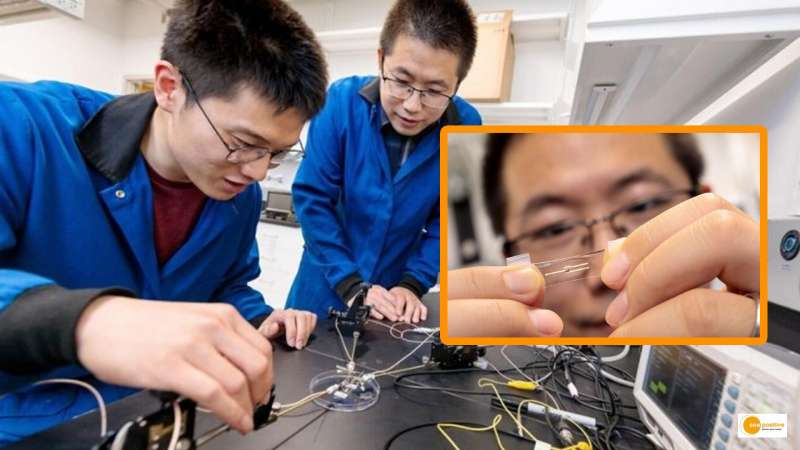

Researchers at the University of Chicago created a flexible stretchy device that records health data and processes by mimicking the functioning of a human brain by fusing wearable technology and artificial intelligence. There are numerous wearable fitness bands and other health devices on the market today. However, the majority of them are incapable of performing complex analyses of the patient’s baseline measurements and disease-spot signals.
This is where artificial intelligence’s potential to bridge the gap comes into play. Machine learning can assist in detecting patterns in complex data sets. However, sending data from a device to a centralised AI location is inefficient and energy-intensive.
Chip that draw conclusions about person’s health
Hence, in the new study, the team aimed at designing a chip that could not only collect data from multiple biosensors but also draw conclusions about the person’s health using AI. “With a smartwatch, there’s always a gap. We wanted something that can achieve very intimate contact and accommodate the movement of skin,” said Sihong Wang, a materials scientist and Assistant Professor of Molecular Engineering. Wang is also one of the authors of the study published in Matter.
The team has decided to use polymers, which are flexible and stretchy and can be used to make semiconductors and electrochemical transistors. They incorporated the polymers into a device that allowed AI to process the data. The chip, dubbed neuromorphic computing, functions more like a human brain than a computer. This allows it to store and analyse data in an integrated manner.
The device’s efficiency was also tested, and it was used to analyse electrocardiogram (ECG) data, or the electrical activity of the heart. They trained the device to classify the data into four categories and discovered that it provided an accurate assessment of whether or not the chip was bent.


